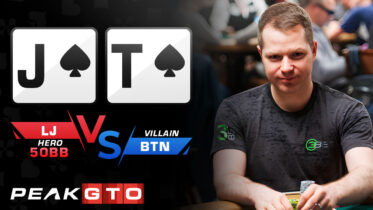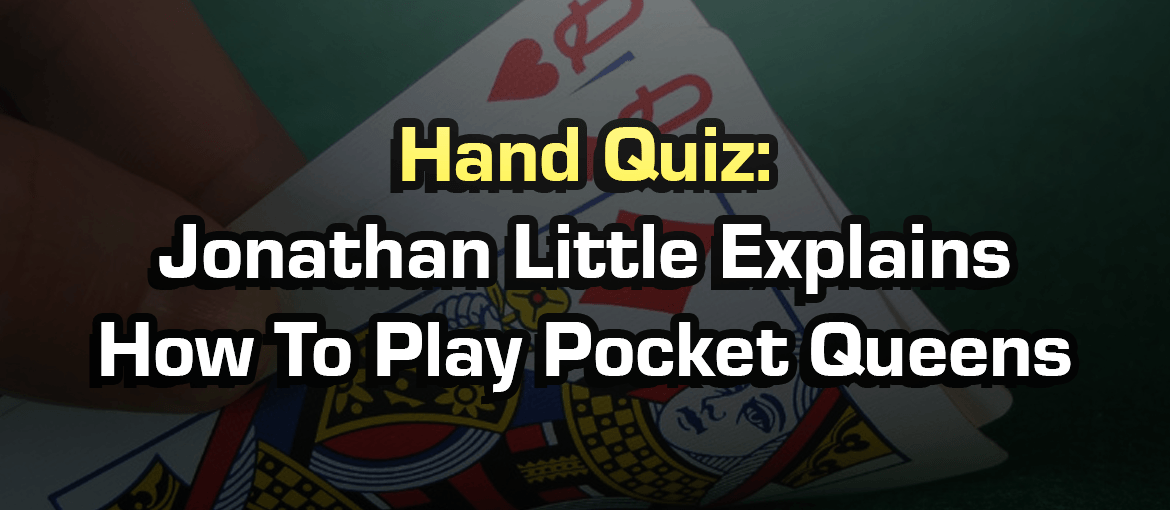Preflop play is arguably the most critical aspect of No Limit Texas Hold’em. It sets the tone for the entire hand and lays the groundwork for postflop decisions.
Game Theory Optimal (GTO) poker provides a framework that ensures players will, at worst, break even against perfect play and, at best, win against any deviations by their opponents. This strategy uses mathematical models to determine the best plays based on ranges and probabilities rather than relying solely on reads or instincts. By adhering to GTO principles from the outset, you minimize mistakes and maximize your overall profitability at the tables.
Understanding Preflop Fundamentals
Preflop play in Texas Hold’em is about setting the stage for the entire hand. Adopting a GTO strategy at this stage helps you make choices that are optimized, providing a solid foundation for the complex decisions that follow on later betting streets.
The Importance of Balance
Balance is a cornerstone of GTO poker strategy. It involves playing a range of hands that keeps your opponents guessing and prevents them from exploiting your tendencies.

For instance, if you only raise with very strong hands, observant opponents will quickly adjust by folding more often, denying you the opportunity to maximize your wins. Conversely, playing too many hands can make you vulnerable to opponents who play a tighter, more aggressive style.
GTO teaches you to find a middle ground, using a balanced range that includes both strong holdings and hands that can develop into strong combinations postflop.
Understanding Ranges
A poker range is the spectrum of hands you or your opponents might hold in a given situation. GTO strategies don’t focus on individual hands but rather on ranges. This is crucial because you often won’t know exactly what hand your opponent holds, but you can make educated guesses based on their actions and tendencies. Preflop, your range decisions will depend on your position at the table, the action that has occurred before you, and your understanding of your opponents’ ranges.
The Concept of Being Unexploitable
A GTO strategy aims to play a style that cannot be easily exploited. This doesn’t mean you will win every hand, but rather that your opponents cannot consistently make profitable adjustments to counteract your strategy. For example, if you perfectly balance your range of hands that you raise with, call with, and fold, you make it extremely difficult for opponents to predict your holdings and make optimal decisions against you.
Opening Ranges
Choosing the right hands to open sets the stage for the subsequent betting rounds. An optimal opening range considers both the strength of your hand and your position. Opening with too wide a range can leave you vulnerable postflop, especially in unfavorable positions, while being too tight can make you predictable and easy to play against.
Analyzing GTO Opening Ranges
Deep stacked GTO opening ranges are designed to be balanced and difficult for opponents to exploit. They vary significantly depending on your position at the table:
- Early Position (EP):
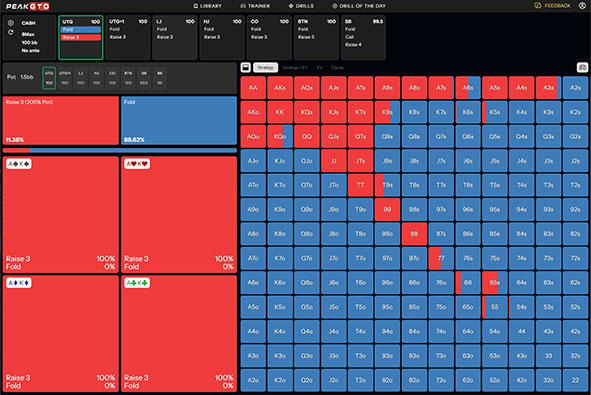
- Middle Position (MP):
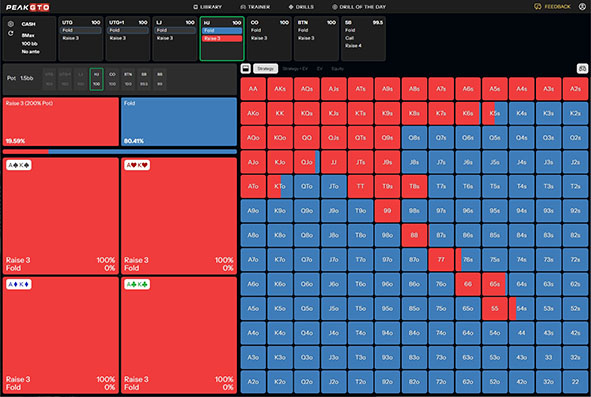
- Late Position (CO and BTN):
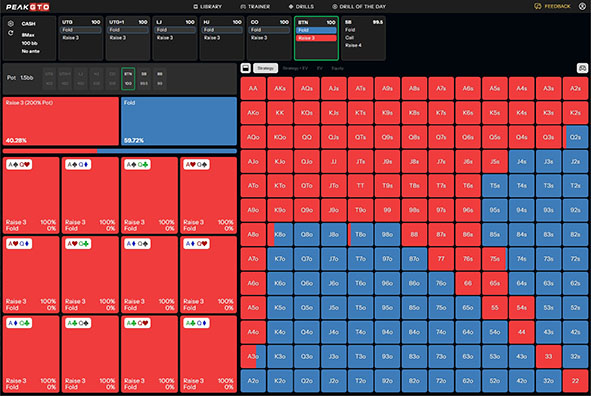
3-Betting Strategy
3-betting preflop is a powerful move that can significantly impact the dynamics of the hand. A well-calibrated 3-betting strategy is essential for keeping your table mates off balance, protecting your ranges, and putting pressure on your opponents.
Importance of 3-Betting
3-betting allows you to capitalize on strong hands and exert control over the pot size, making it more costly for opponents to see flops and play speculative hands. It also serves to isolate weaker players and take advantage of positional benefits. When used effectively, 3-betting can generate immediate profit through folds and create advantageous postflop situations.
Polarized vs. Merged Ranges
When constructing a 3-betting strategy, you can choose between a polarized range and a merged range:
- Polarized Range: This strategy involves 3-betting with two distinct types of hands: very strong hands (like AA, KK, QQ) and speculative hands that function well as bluffs (such as A5s, K5s, suited connectors). The goal is to either win a big pot or steal preflop with minimal risk, keeping opponents guessing about your actual hand strength.
- Merged Range: A merged range includes a wider array of strong hands but fewer bluffs. This approach is often suitable in games where opponents are likely to call 3-bets frequently, allowing you to continue more often with a hand that has good postflop playability.
Positional Considerations
Your poker table position is crucial when deciding to 3-bet. Being in position postflop gives you more information and control, allowing for more profitable decision-making. Consequently, your 3-betting range can be wider when you’re in a position to act last postflop.
Incorporating a nuanced 3-betting strategy into your game can significantly enhance your effectiveness in controlling the pot and navigating the preflop action. By understanding when to use polarized versus merged ranges and how to adjust your approach based on position and opponent behavior, you’ll become a more formidable and unpredictable opponent at the poker table.
Examples of GTO 3-Bet Ranges
The ideal 3-bet range varies based on your position and the opener’s position. Here are some examples illustrating GTO 3-bet ranges from different positions:
- From the Small Blind:
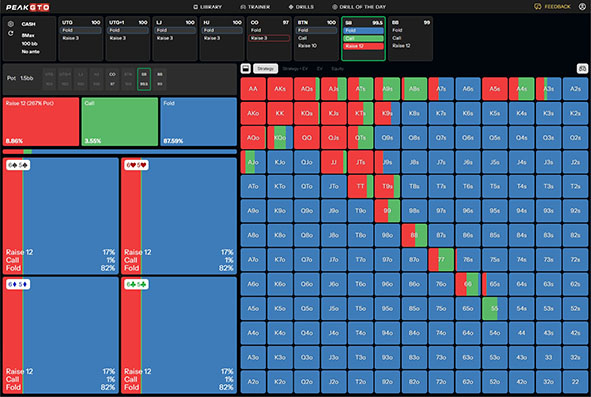
- From Late Position (e.g., Button):
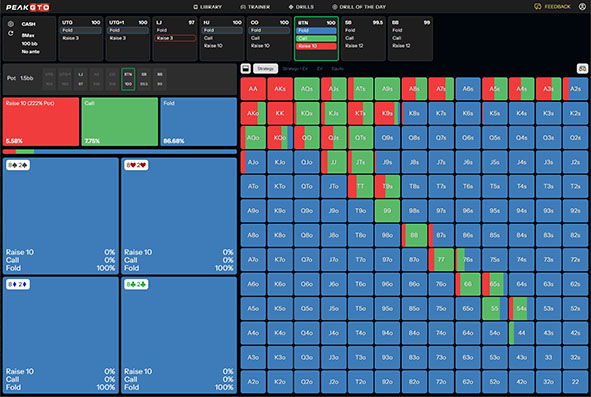
Defending Against Raises
In No Limit Texas Hold’em, defending against raises is a critical aspect of a robust preflop strategy. Properly defending ensures you are not easily exploited by aggressive players and helps maintain a balanced approach to your game. A strong defense strategy involves a mix of calling and 3-betting, which should be adjusted based on the raiser’s position and tendencies.
Big Blind Defense
The big blind typically has better pot odds for calling due to already having one big blind invested in the pot, allowing for a wider defending range compared to the calling ranges of other positions.
Calling vs. 3-Betting
- Calling: You should call with hands that have good postflop playability but might not be strong enough to 3-bet. These include medium pairs, suited connectors, and some high-card hands that perform well in multiway pots.
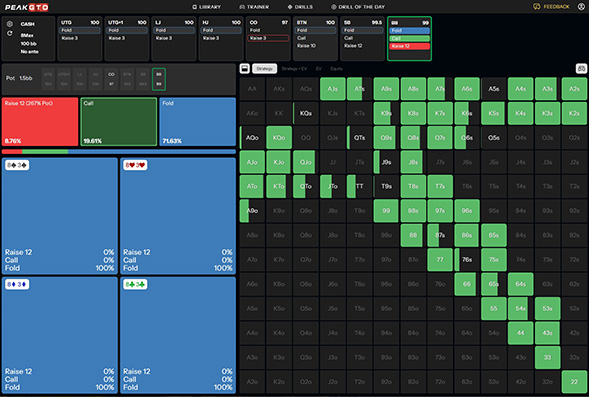
- 3-Betting: This is used both for value with very strong hands and as a bluff with hands that have good blocking effects (like Ax or Kx) but might not be strong enough to call a raise.
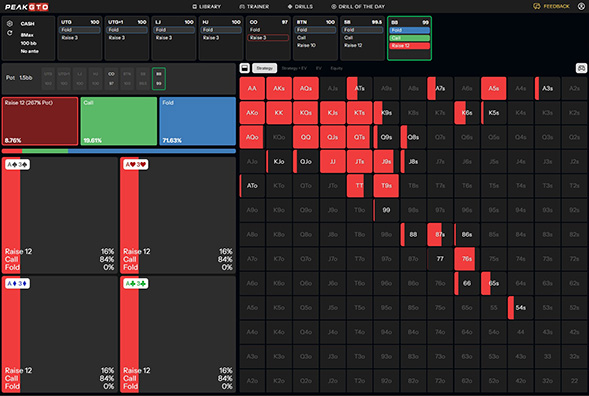
Final Thoughts
Having a strong, theoretically sound preflop understanding is imperative for any profitable cash game strategy. By focusing on formulating balanced and robust opening ranges, employing strategic 3-betting, and effectively defending against raises, you set up a strong start, maintain unpredictability, and maximize your potential at the poker table.
As you continue your poker journey, remember that mastering these strategies is just the beginning. Each game is a new opportunity for growth and adaptation. Keep studying, practicing, and adjusting your play based on the dynamics at the table. With dedication and persistent refinement of your skills, you’re well on your way to becoming a formidable player in the competitive realm of cash games.




